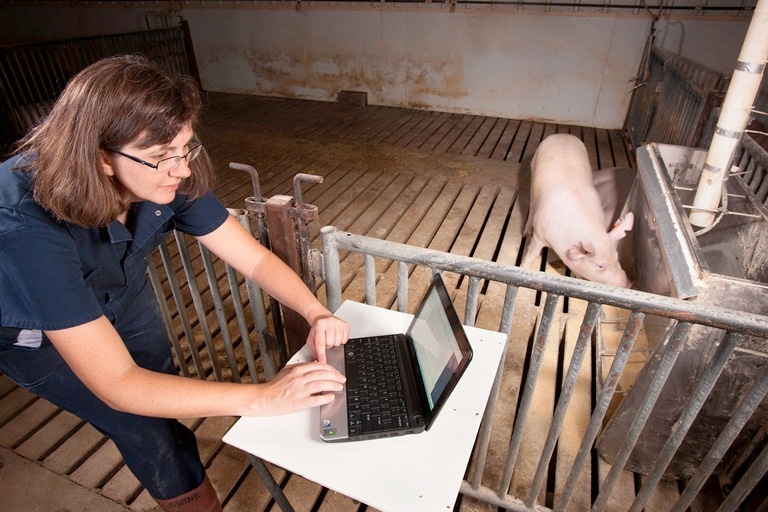Ability to Monitor Feeding Behavior of Pigs Enhanced
July 15, 2013

A group of U.S. Department of Agriculture (USDA) scientists has developed a new system that monitors livestock feeding behavior.
Agricultural engineers Tami Brown-Brandl and Roger Eigenberg at the Agricultural Research Service (ARS) Roman L. Hruska U.S. Meat Animal Research Center (USMARC) in Clay Center, NE, designed software and hardware that incorporates standard radio-frequency identification (RFID) technology and a commercial reader to monitor animals' eating habits. The system, designed to work in an industry setting, includes an ear tag applied to each animal, monitoring equipment and data recording and storage.
Scientists are using this data to determine the normal day-to-day variation in feeding behavior – the amount of time each animal spends eating, the number of eating events per day and the timing of those events. By determining an animal's normal eating behavior, it might be easier to detect a sick animal when it starts spending less time at the feeder. These animals can then be treated early to help prevent severe illness. Information gathered might also be used to improve management and establish genetic differences within a herd, according to USDA researchers.
Like what you're reading? Subscribe to the National Hog Farmer Weekly Preview newsletter and get the latest news delivered right to your inbox every Monday!
The low-cost system was first used to monitor feedlot cattle and has been adapted to grow-finish swine. Individual animal feeding behavior can be measured without any outside influence, according to Brown-Brandl, who works in USMARC's Environmental Management Research Unit.
In one study, antennas were mounted on standard swine feeders in six pens that each held 40 pigs. In addition to collecting feeding behavior data, video cameras were used to evaluate the durability of the system, which was shown to be dependable.
Scientists plan to use the system in future studies to examine feeding behavior as it relates to age, gender, weight gain and the health of animals.
ARS is USDA's principal intramural scientific research agency.
Read more about this research in the July 2013 issue of Agricultural Research magazine.
You might also like:
Pork Exports Still Down, but Domestic Consumption Shows Strength
New Data Tracking Helps Identify Top Production
10 Tips for Young Pork Producers
You May Also Like


